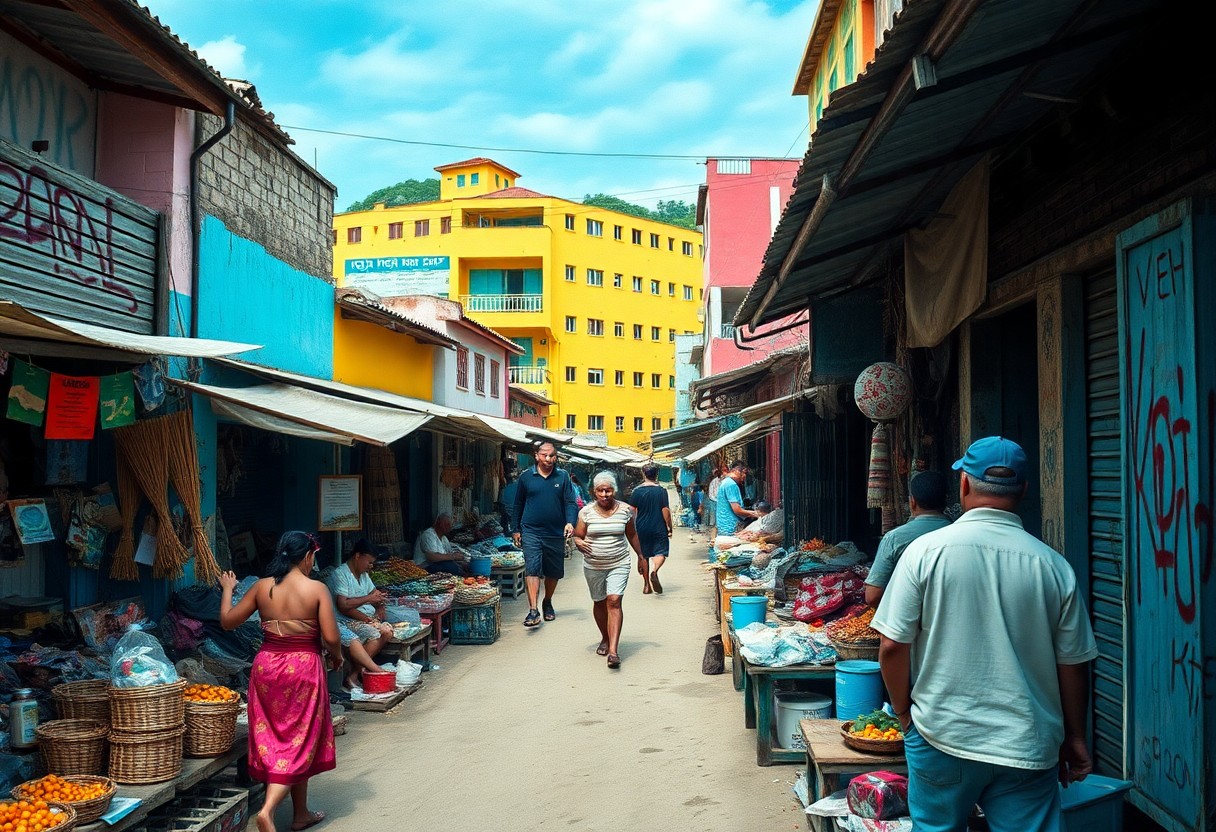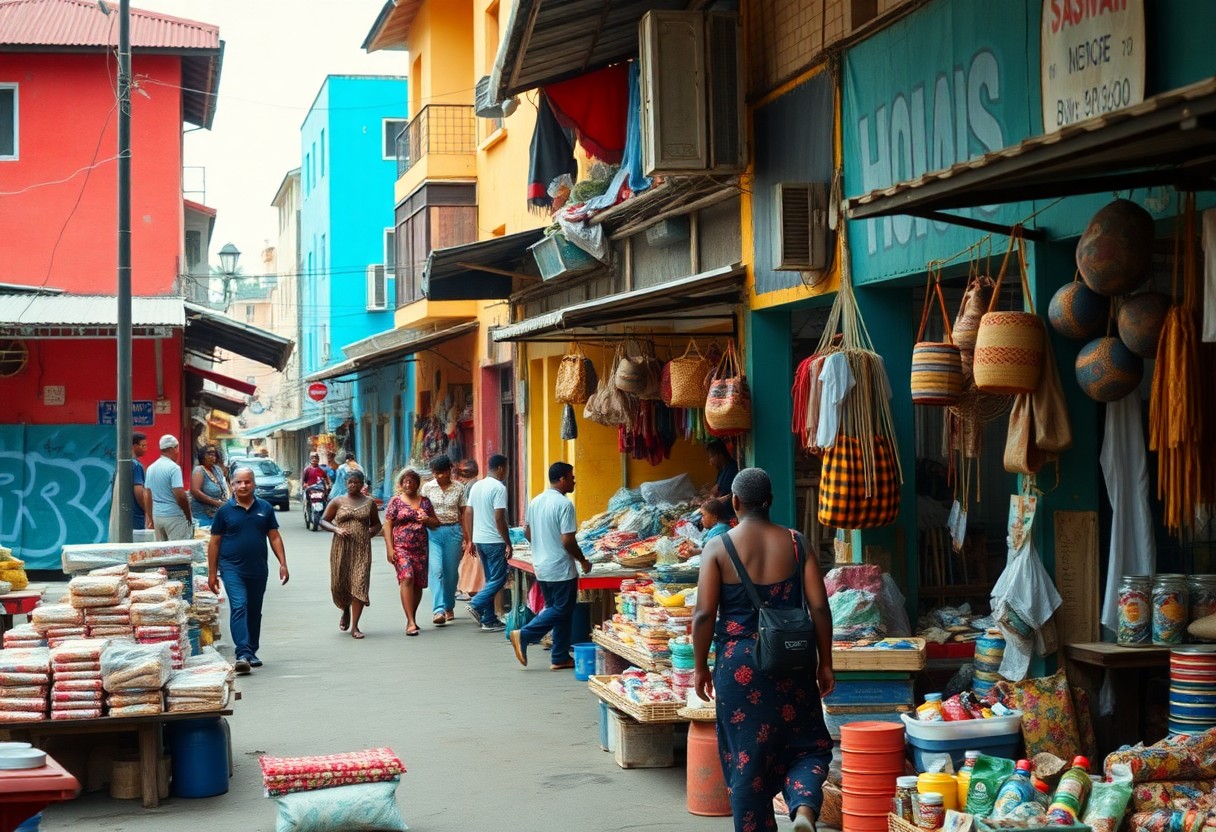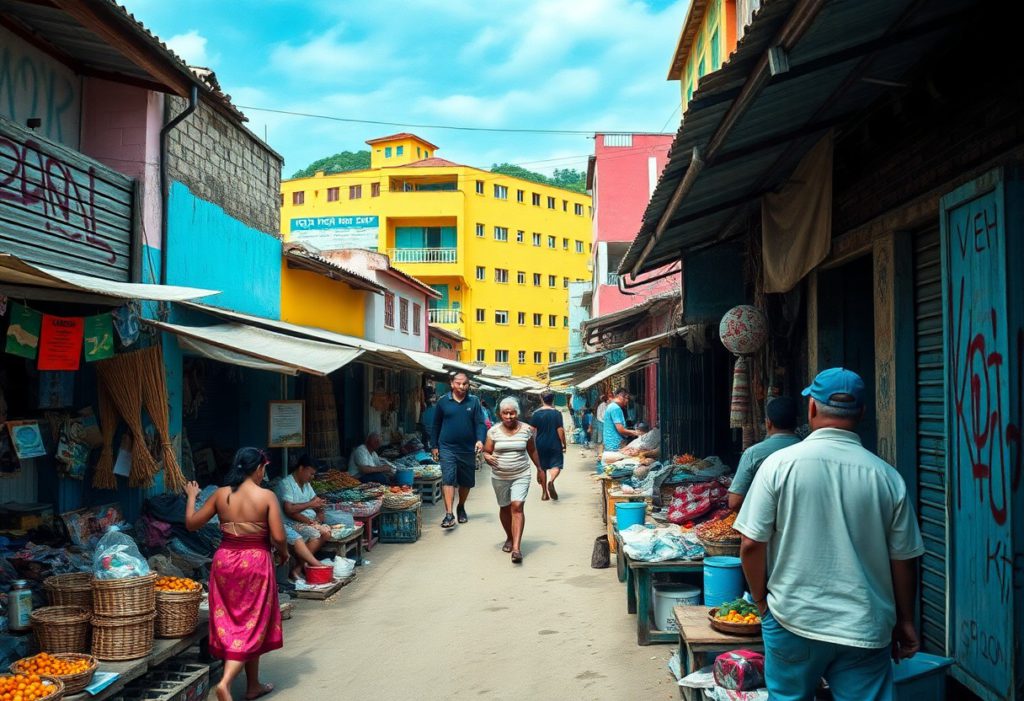Belize is navigating a complex economic landscape that challenges simplistic narratives surrounding poverty. While the nation confronts significant economic difficulties, it simultaneously possesses remarkable prospects for growth and development. A thorough analysis of Belize's economic environment will yield a sophisticated understanding of the development challenges alongside emerging opportunities. The health of Belize's economy is shaped by pivotal sectors such as tourism, agriculture, and offshore services, which collectively form a dynamic economic ecosystem. By exploring these interconnected sectors, one can gain valuable insights into the economic trajectory of Belize and the innovative strategies that are facilitating enhanced prosperity.
Grasping Economic Indicators: A Deep Dive into Poverty Metrics
Before delving into Belize’s economic environment, it is essential to understand how poverty is measured and conceptualised. Economic indicators provide a comprehensive view of a nation’s financial health, enabling a multi-faceted evaluation of its economic status. These critical metrics are essential for understanding the complex economic challenges faced by countries like Belize, moving beyond simplistic interpretations of wealth and poverty towards a more nuanced comprehension.
Gross Domestic Product (GDP): A Key Economic Barometer
A crucial measure of economic performance is the Gross Domestic Product, which assesses the total value of all goods and services produced within a nation. In Belize, the GDP is roughly $2.5 billion, highlighting a small yet developing economy. This figure provides context for appreciating the overall economic output and the potential for future growth within Belize.
Evaluating Average Household Income: Insights into Economic Struggles
The average household income in Belize is approximately $25,000 per annum, revealing significant economic hurdles faced by its citizens. This figure is substantially lower than that of many developed nations, indicating potential limitations for families striving to manage their financial responsibilities.
Moreover, average household income reflects deeper economic complexities. The distribution of income is notably uneven, exposing stark contrasts between urban and rural regions. Coastal areas and tourist destinations tend to provide higher earnings, while agricultural communities often grapple with more severe economic hardships.
Interpreting Unemployment Rates: Navigating Job Market Realities
Unemployment rates in Belize range from 10% to 12%, signifying a challenging economic environment. This percentage indicates considerable difficulties within the job market, particularly for younger individuals and residents of rural areas.
Unemployment indicators reveal intricate economic dynamics. The labour market lacks diversification, heavily reliant on tourism and agriculture. You will see that seasonal employment and a lack of professional opportunities exacerbate these concerning unemployment figures, highlighting the pressing need for strategic economic development initiatives.
Investigating Historical Influences on Belize’s Economic Landscape
A thorough understanding of Belize’s economic condition requires a look into its historical context, revealing a complex narrative filled with historical challenges and transformational opportunities. To comprehend the evolution of the economy, one must consider its colonial history, dependence on agriculture, and significant events that have shaped its current economic framework.
The Enduring Impact of Colonialism on Belize’s Economy
Throughout British colonial rule and subsequent independence, Belize experienced substantial economic transformations that established lasting structural imbalances. You can trace the roots of colonial economic systems that created dependency patterns which continue to influence the nation’s development today, perpetuating economic challenges within contemporary frameworks.
Dependence on Agriculture and Its Export Dynamics
Historically, Belize’s economy has been intricately linked to agricultural exports such as sugar, citrus, and bananas. These primary commodities have been vital for the nation’s economic survival, accounting for a significant portion of export revenue and employment opportunities.
Furthermore, the significance of agriculture extends beyond mere economic statistics. Agriculture represents more than just an economic activity; it serves as a cultural and social cornerstone that connects Belizean communities to their land and heritage, providing both economic sustenance and a sense of national identity.
Defining Historical Events that Shaped Belize’s Economic Framework
The achievement of independence in 1981, alongside subsequent changes in economic policy, marked critical junctures in Belize’s history. You can observe how these events redefined the nation’s economic trajectory, introducing new governance structures and international economic relations that continue to shape its economic landscape.
Further examination reveals that events such as global economic downturns, hurricane devastation, and shifts in international trade policies have significantly influenced Belize’s economic resilience. You will appreciate how these external factors have not only posed challenges but also inspired the nation’s economic adaptation and strategic progress.
Assessing Demographic Influences on Economic Growth
Distinct from other Central American nations, Belize features a unique demographic profile with significant economic implications. The composition of its population presents both notable challenges and opportunities for national growth. Key demographic characteristics include:
- A youthful population with a median age of around 25 years
- A diverse ethnic composition
- High levels of urban migration
Understanding these demographic dynamics is crucial for identifying potential economic pathways for Belize.
Population Growth Trends and Shifts in Migration
Belize experiences moderate population growth at an annual rate of approximately 1.8%. Your insights into migration patterns reveal significant urban-rural shifts, with young professionals moving to coastal and urban centres in search of improved economic prospects.
Educational Attainment and Workforce Skills Development
In Belize, educational attainment serves as a vital economic metric. You will find that secondary education completion rates hover around 60%, with considerable disparities evident across various socioeconomic segments.
Moreover, a pivotal aspect of Belize’s educational framework is the ongoing initiatives aimed at enhancing workforce skills. Technical and vocational training programmes are expanding to bridge the gap between academic preparation and industry requirements. Your awareness of these efforts can shed light on the country’s potential for substantial economic transformation.
The Impact of Ethnic Diversity on Economic Dynamics
The multicultural fabric of Belize profoundly influences its economic dynamics. You’ll witness how various ethnic groups contribute to distinct economic sectors, forming a unique economic ecosystem.
Additionally, the cultural richness of Belize goes beyond mere demographic figures. Your understanding of how diverse ethnic communities engage in economic activities reveals a complex web of trade, entrepreneurship, and social collaboration. Indigenous groups and immigrant communities play vital roles in crafting innovative economic strategies and development approaches.

Tourism: The Pillar of Economic Advancement
Belize’s distinctive economic landscape draws numerous tourists, with tourism contributing approximately 40% to the nation's GDP. You’ll discover that the tourism sector has become an essential lifeline for the nation’s economic sustainability, generating diverse growth opportunities. This industry leverages Belize’s stunning natural resources, including pristine beaches, ancient Mayan ruins, and rich biodiversity, offering an enticing value proposition for international visitors seeking authentic experiences.
Growth of Eco-Tourism: A Sustainable Approach
For travellers prioritising sustainability, Belize is recognised as a premier destination for eco-friendly tourism. You can explore protected marine reserves, lush rainforests, and wildlife sanctuaries exemplifying the country's commitment to environmental conservation. The eco-tourism sector is rapidly expanding, appealing to those who value responsible travel and aim to mitigate their ecological footprint.
The Seasonal Nature of Tourism: Economic Implications
A notable characteristic of Belize’s tourism is its seasonality. You’ll note that peak tourist seasons typically occur from December to April, generating substantial economic benefits during these months. This seasonal trend significantly influences local economic activities and employment prospects.
The growth of seasonal tourism has profound implications for Belize’s economic framework. You will observe that during peak months, local businesses experience heightened economic activity, leading to increased job opportunities in hospitality, transportation, and related services. These seasonal variations create a dynamic economic environment that necessitates strategic planning and diversification.
Opportunities and Challenges within the Tourism Sector
Approximately 70% of Belize’s tourism infrastructure is concentrated in coastal and archaeological locations. You’ll find that this concentration presents both opportunities and challenges for sustainable economic growth. The sector must strike a balance between resource preservation and economic expansion.
Additionally, the tourism sector possesses vast potential for transformation. You’ll discover that Belize has unexplored opportunities in developing specialised tourism experiences. By investing in infrastructure, training the local workforce, and creating innovative tourism products, the nation can enhance its global competitiveness and economic resilience.
Agricultural Sector: Navigating Resource Management
Despite limited land resources, Belize’s agricultural sector is integral to its economic framework. You’ll find that the country’s diverse geography allows for a variety of agricultural production, including traditional crops and innovative sustainable practices. This sector contributes roughly 10% to the national GDP, underscoring its significance within Belize’s economic structure. Understanding this sector reveals considerable potential for growth and innovation in resource management strategies.
Key Agricultural Commodities and Their Economic Significance
The management of agricultural products in Belize focuses on vital exports such as sugar, citrus, bananas, and marine resources. You’ll learn that these commodities form the backbone of the agricultural export economy, generating significant foreign exchange. Your analysis will reveal that sugar alone accounts for nearly 40% of agricultural export earnings, highlighting the sector’s economic importance.
Climate Change: Challenges Facing Agriculture
By examining the effects of climate change, you’ll grasp the serious challenges confronting Belize’s agricultural sector. Rising temperatures, unpredictable precipitation, and an increased frequency of extreme weather events pose substantial risks to crop yields. Your exploration highlights potential threats to food security and agricultural sustainability.
Moreover, the repercussions extend beyond immediate agricultural losses. Coastal farmland increasingly faces salination due to rising sea levels, jeopardising traditional farming areas. You will recognise that climate change disrupts not only crop production but entire agricultural ecosystems, compelling farmers to adopt new methods or alter production strategies.
Embracing Sustainable Practices and Innovations in Agriculture
Belize is gradually adopting sustainable and innovative farming techniques. You’ll find practices such as agroforestry, precision agriculture, and organic farming gaining traction. These methods aim to enhance productivity while minimising environmental impact, providing insight into the future of agricultural development.
Innovative products and technologies are reshaping agricultural practices in Belize. Precision farming technologies enable farmers to optimise resource utilisation, minimise waste, and increase crop yields. You’ll appreciate how these advancements represent a strategic response to environmental challenges, positioning Belize’s agricultural sector for a more resilient and efficient future.

Identifying Barriers to Economic Growth
Belize's economic landscape faces numerous barriers that hinder sustainable development. Limited economic diversification, heavy reliance on tourism and agriculture, and vulnerability to external economic shocks create significant obstacles. You will find that structural challenges, including insufficient infrastructure investment and a constrained domestic market, further restrict potential growth opportunities. High public debt, limited foreign direct investment, and difficulties in developing competitive industries beyond traditional sectors complicate the nation’s economic outlook.
Environmental Threats: The Impact of Hurricanes and Natural Disasters
Hurricanes pose a serious threat to Belize’s economic stability, causing extensive damage to infrastructure, agriculture, and the tourism sector. You’ll observe that frequent natural disasters severely disrupt economic progress, particularly impacting coastal areas. The recurrence and intensity of these events strain national resources, create significant economic setbacks, and necessitate extensive reconstruction efforts that divert funds from essential development initiatives.
Climate Change and Its Implications for Infrastructure
In light of environmental challenges, you’ll find that climate change gradually undermines the resilience of Belize’s infrastructure. Rising sea levels and the increasing frequency of extreme weather events threaten critical transportation, communication, and utility systems. Your infrastructure faces unprecedented stress, with long-term economic implications that could severely hinder development prospects.
Additionally, the vulnerability of infrastructure extends beyond immediate damage. You’ll recognise that the impacts of climate change generate cascading economic challenges, comprising higher maintenance costs, reduced operational efficiency, and potential community displacement. Coastal infrastructure is particularly at risk, with the potential for significant economic disruption and increased national expenditure on adaptation strategies.
Socioeconomic Inequality and Its Economic Ramifications
Beyond economic statistics, you’ll uncover profound socioeconomic disparities that challenge Belize’s developmental trajectory. Unequal access to education, healthcare, and economic opportunities generates systemic obstacles that perpetuate cycles of poverty and restrict social mobility for many segments of the population.
This intricate socioeconomic landscape reveals deeper structural issues. You’ll find that inequality manifests through uneven resource distribution, limited economic opportunities for marginalised communities, and persistent barriers to education and employment. Indigenous and rural populations often experience heightened economic marginalisation, leading to complex social dynamics that hinder comprehensive national development.

Government Strategies for Economic Advancement
The Belizean government has implemented strategic measures aimed at addressing economic challenges, focusing on comprehensive economic development. You will find that their approach encompasses diverse sectors, aiming to stimulate growth and alleviate poverty through targeted policy interventions and sustainable economic planning.
Effective Approaches to Poverty Reduction
In devising poverty alleviation strategies, Belize has conducted a thorough assessment of its economic landscape. You can see that their approach prioritises focused social programmes and economic empowerment initiatives designed to assist vulnerable populations and create sustainable pathways out of poverty.
Investments in Education and Workforce Development: A Path to Economic Resilience
Efforts to reduce economic disparities commence with education. You’ll observe that Belize is investing in skill-based training programmes and educational infrastructure to enhance human capital and prepare citizens for emerging economic opportunities.
Beyond basic educational investments, Belize has developed specialised workforce development programmes aimed at bolstering technical skills, digital literacy, and vocational training. These initiatives seek to align educational outcomes with labour market requirements, cultivating a more competitive and adaptable workforce capable of driving economic transformation.
Forging Global Partnerships and Securing Foreign Assistance
International collaboration is a crucial element of Belize’s economic strategy. You’ll notice strategic partnerships with global organisations that provide financial support and technical expertise to accelerate economic development efforts.
For instance, institutions like the Inter-American Development Bank and the World Bank have played pivotal roles in supporting Belize’s economic initiatives. These collaborations facilitate not only financial resources but also knowledge transfer, empowering Belize to develop sustainable economic models and apply best practices in economic management.
Real Estate and Infrastructure: Opportunities for Growth
Belize’s real estate sector embodies a dynamic and evolving economic landscape with substantial growth potential. You’ll find that the market offers unique investment opportunities, driven by the country’s natural beauty, strategic location, and emerging economic possibilities. Foreign investors are increasingly drawn to Belize’s real estate market, recognising potential in both residential and commercial developments throughout coastal and inland areas.
Exploring the Real Estate Market: A Promising Environment
A review of Belize’s real estate market unveils a diverse and promising landscape. You’ll discover properties ranging from beachfront condominiums to agricultural land, with prices varying significantly across different regions. The market is characterised by its relatively low barriers to entry for international buyers, positioning it as an attractive destination for those seeking alternative investment avenues in Central America.
Foreign Investment Prospects in Infrastructure Development
Infrastructure development in Belize presents enticing investment opportunities for you. You’ll find prospects in tourism-related properties, sustainable development projects, and emerging economic zones. The government is increasingly adopting policies that welcome foreign investment, creating a more accessible and transparent real estate environment.
A deeper exploration of foreign investment opportunities reveals intricate potential. You will notice that tourism-driven real estate remains a primary area of interest, with coastal and island properties attracting significant international attention. Eco-tourism initiatives, retirement communities, and agricultural investment zones provide diverse entry points into the Belizean market.
The Impact of Infrastructure Developments on Economic Growth
On the infrastructure front, Belize is undergoing transformative developments. You’ll witness significant investments in transportation, telecommunications, and urban infrastructure that are reshaping the economic landscape. These projects not only enhance national connectivity but also boost the overall attractiveness of the country for investment.
This comprehensive infrastructure strategy signifies a critical juncture for Belize's economic development. You’ll discover that major initiatives such as port expansions, road network upgrades, and digital infrastructure enhancements are generating new economic opportunities. These efforts aim to attract foreign investment, improve local living standards, and position Belize as a competitive emerging market in Central America.
Technological Advancements and Innovation Fueling Economic Change
Technology is not only transforming Belize’s economic landscape but also offering a promising avenue for future development. You’ll find that emerging digital infrastructure is steadily expanding across both urban and rural areas, indicating potential for technological progress. Your understanding of Belize’s tech ecosystem reveals gradual yet significant strides in connecting communities and creating innovative opportunities for economic growth.
The Emergence of Startups and the Entrepreneurial Ecosystem
Approximately a dozen technology startups are emerging in Belize, focusing on digital services and innovative solutions. You’ll observe young entrepreneurs harnessing technology to address local challenges, particularly in sectors such as tourism, agriculture, and financial technology. Your perspective on Belize’s startup ecosystem reveals a vibrant, albeit small, network of creative problem-solvers.
The Role of Technology in Economic Diversification
The influence of technology extends beyond traditional economic sectors in Belize. You can witness how technological innovations are creating new economic opportunities in areas like digital services, offshore software development, and tech-enabled tourism experiences. Your understanding of this transformation underscores technology’s potential to forge alternative revenue streams.
At the heart of this technological diversification, Belize is strategically positioning itself to attract international digital investments. You’ll see emerging opportunities in blockchain, fintech, and digital infrastructure that could significantly enhance the nation’s economic potential. Your awareness of these trends suggests a promising technological pathway for Belize’s economic future.
Challenges and Prospects in Technological Development
Innovation in Belize faces considerable infrastructure and educational obstacles. You’ll find that limited technological education and connectivity challenges currently hinder comprehensive tech development. Your perspective acknowledges both the barriers and the potential for technological growth in this emerging market.
The entrepreneurial spirit in Belize demonstrates remarkable resilience despite technological limitations. You’ll observe strategic investments in digital skills training and international technology collaborations emerging as key strategies to overcome development challenges. Your understanding of this landscape reveals a nuanced approach to technological advancement, balancing local needs with global tech trends.
Understanding Belize’s Financial Services Landscape
Belize’s financial services sector is pivotal to its economic framework. The country has established a diverse banking ecosystem that facilitates both local and international financial transactions. You’ll find a mix of domestic and international banks operating in Belize, offering a range of financial products and services tailored to meet the needs of businesses and individuals.
Overview of Belize’s Financial Institutions and Their Role
In terms of finance, Belize is home to several key banking institutions, including domestic banks like Belize Bank Limited and international offshore banking entities. You can observe a financial system that blends traditional banking services with offshore financial opportunities, creating a unique economic environment that attracts both local and international investors.
Challenges to Financial Service Accessibility
A significant challenge in Belize’s financial landscape is the limited accessibility of banking services for rural and low-income populations. Geographic limitations, sparse bank branch networks, and stringent documentation requirements can prevent many individuals from fully engaging with the formal financial system.
Moreover, barriers to financial inclusion extend beyond basic infrastructure issues. You should recognise that low financial literacy, high transaction costs, and limited digital connectivity compound the challenges faced by many Belizeans in accessing comprehensive financial services. Economic disparities and a lack of financial education further complicate the situation for marginalised communities.
Innovative Trends in Financial Technology: A New Horizon
Belize is witnessing emerging digital banking solutions at the forefront of financial transformation. You’ll find that mobile banking platforms and digital payment systems are gradually expanding, offering new avenues for financial engagement and potentially bridging existing service gaps.
With technological advancements, Belize is experiencing a slow yet promising digital financial revolution. You can observe mobile money platforms, digital payment systems, and emerging fintech solutions that aim to enhance financial inclusion and accessibility. These innovations have the potential to reshape how Belizeans interact with financial services, particularly in underserved rural and urban communities.
International Trade Partnerships: Navigating Global Markets
Belize’s international trade landscape presents a complex economic narrative. You’ll find that the country’s trade dynamics are influenced by its strategic geographic position and diverse economic partnerships. Engaging with global markets, Belize leverages its unique position to partake in international commerce, navigating challenges while uncovering opportunities for economic growth and development.
Identifying Major Trade Partners and Their Impact
In addition to the United States and Mexico, you’ll discover that key trade partners significantly shape Belize’s economic interactions. The United Kingdom, Caribbean nations, and Central American countries form a vital network of trade relationships that enhance your understanding of Belize’s international economic connections.
Analyzing Trade Agreements and Economic Implications
Trade partners like CARICOM and the Caribbean Basin Initiative provide Belize with strategic trade frameworks. You’ll appreciate how these agreements foster economic collaboration, reducing tariffs and facilitating smoother international business transactions.
Fundamentally, trade agreements encompass mechanisms that strengthen economic resilience. These arrangements not only lower trade barriers but also afford Belize opportunities to diversify its economic partnerships, thereby mitigating risks associated with reliance on a single market.
Challenges and Opportunities in Export Strategies
Within every export strategy, you’ll encounter the intricate dynamics of global market competition. Agricultural products and marine resources hold significant promise for Belize’s export sector, providing insights into the nation’s economic capabilities.
A thorough examination reveals that export challenges extend beyond mere production capacity. You’ll recognise that infrastructure deficiencies, transportation costs, and global market volatility present substantial hurdles. However, strategic investments in technology, diversification, and targeted market development can convert these challenges into considerable economic opportunities for Belize.
Understanding Societal Perceptions of Poverty
For decades, Belize’s poverty landscape has been complex, reflecting social dynamics that transcend mere economic indicators. You’ll find that societal perspectives reveal intricate challenges where economic stratification intersects with cultural and historical contexts. The nation’s understanding of poverty encompasses far more than financial metrics, incorporating broader social experiences that shape collective perceptions of economic well-being.
Qualitative Aspects of Poverty: A Comprehensive Perspective
In addition to conventional financial assessments, Belize approaches poverty through multidimensional lenses. You can observe how social mobility, access to education, and community resilience contribute to a deeper understanding of poverty. These qualitative measures offer insights into the lived experiences of Belizean communities, transcending simplistic economic classifications.
Public Perception of Wealth Distribution: Navigating Inequality
In light of economic challenges, you’ll notice significant disparities in wealth distribution. Urban-rural economic divides create distinct perceptions around economic opportunities, with coastal and urban areas showcasing vastly different economic realities compared to inland regions.
Moreover, societal perceptions of wealth distribution in Belize are deeply rooted in historical socioeconomic structures. You’ll discover that ethnic diversity significantly affects economic opportunities, with marginalised communities facing greater barriers. The interconnectedness of social identity and economic potential fosters a complex narrative of inequality and opportunities for transformation.
The Role of Non-Governmental Organisations in Poverty Alleviation
Having analysed Belize’s economic context, you’ll recognise that non-governmental organisations are crucial in combating systemic poverty. These organisations provide essential support through targeted interventions in education, healthcare, and economic empowerment.
At the forefront of poverty alleviation, both international and local NGOs collaborate to implement strategic programmes. You’ll find that these organisations not only offer immediate relief but also develop sustainable development initiatives that address the root causes of economic vulnerability, creating pathways for long-term community resilience and economic progress.
Envisioning Belize’s Future Economic Potential
Current economic indicators suggest that Belize possesses significant untapped potential for growth. You will find that the country’s strategic location, diverse natural resources, and emerging economic sectors create a promising foundation for future development. The intersection of tourism, agriculture, and emerging industries forms a multifaceted economic landscape that could significantly alter Belize’s economic trajectory in the years ahead.
Highlighting Emerging Industries and Sectors
The future of economic diversification in Belize hinges on innovative sectors such as renewable energy, digital technology, and sustainable agriculture. You can observe increased investments in these areas, which promise to create job opportunities and attract international investment. The nation's commitment to fostering these emerging industries signals a proactive approach to economic transformation.
Global Trends Influencing Belize’s Economic Future
As globalization and technological advancements continue to evolve, Belize positions itself to capitalise on international economic trends. Climate-conscious investments and opportunities within the digital economy are reshaping the potential for economic interactions, unveiling new avenues for growth and global collaboration.
Moreover, the global economic landscape presents both challenges and opportunities for Belize. The dynamics of international trade, technological innovations, and shifting market demands compel the nation to adapt proactively. Developing digital infrastructure and forming strategic international partnerships will be crucial for enhancing Belize’s economic resilience and sustainable growth potential.
Long-Term Economic Strategies: A Vision for Belize
Potential long-term economic strategies for Belize emphasise sustainable development and strategic sector investments. You will find that targeted investments in education, infrastructure, and innovation are essential for reshaping the country’s economic landscape.
Emerging strategic visions for Belize’s economic future stress holistic development approaches. Sustainable tourism, green energy initiatives, and technology-driven economic models are becoming integral to the nation’s long-term economic planning. You can anticipate a comprehensive transformation that harmonises economic growth with environmental and social considerations.
Key Takeaways from Belize's Economic Landscape
In summary, Belize’s economic landscape is intricate, defined by challenges rooted in historical constraints and structural limitations. Your comprehension of its economic status paints a nuanced picture that transcends simplistic measures of poverty. While the country faces substantial economic hurdles, including high unemployment and vulnerability to external shocks, Belize demonstrates resilience through tourism, agriculture, and emerging sectors. You will discover that its potential for growth coexists with its current economic constraints, indicating pathways for strategic development and international collaboration that could reshape its economic trajectory.
Your Questions Answered: Frequently Asked Questions
What is the current state of Belize’s economy concerning poverty and development?
Belize grapples with significant economic challenges, with around 41% of its population living below the poverty line. The nation faces high unemployment rates, limited economic diversification, and heavy reliance on tourism and agricultural exports. Despite these obstacles, Belize is actively working to improve its economic infrastructure and attract foreign investment to stimulate growth and alleviate poverty.
How do economic factors affect the quality of life for ordinary citizens in Belize?
Many Belizean citizens encounter economic difficulties due to limited job prospects and low average incomes. The median household income remains low, with rural areas experiencing more acute economic struggles. Income inequality is pronounced, with stark contrasts between urban centres like Belize City and rural communities. These economic limitations affect access to healthcare, education, and essential services for a significant portion of the population.
What strategies is Belize implementing to address its economic challenges?
Belize is pursuing various strategies for economic development, including diversifying its economic base beyond traditional sectors. The government is promoting tourism, advancing agricultural technologies, and enhancing offshore financial services. International development collaborations and targeted poverty alleviation programmes aim to create more economic opportunities. Additionally, Belize is investing in education and skills training to boost workforce capabilities and attract international business investments.
The Article Is Belize Really Poor? Understanding Economic Challenges and Potential appeared first on Belize Travel Guide
The Article Belize’s Economic Challenges: Is Poverty a Reality? Was Found On https://limitsofstrategy.com


